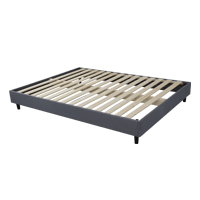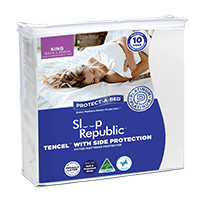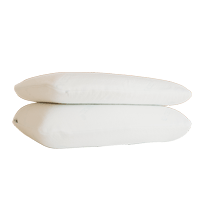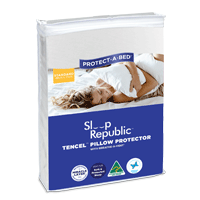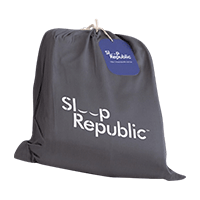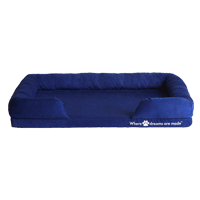Mattress
Foam mattresses vs. spring mattresses
Which is best? Hit the hay with your perfect mattress today.
You may have read that foam mattresses are best because they are more comfortable and conform to the body’s contours. On the other hand, you probably know someone who swears by spring mattresses as they are more supportive for people with back pain. Either way, if you’re in the market for either a foam or spring mattress, read on! We’ve gathered everything you need to help make your decision easy.
Call us biased, but we think hybrid mattresses, combining layers of foam, pocket springs and latex provide the very best elements of all three mattress types. Head over to our technology page and find out what all the fuss is about and why we’ve won BedBuyer’s Best Overall Mattress in a Box, two years running!
Let me be clear. There is no definitive answer to this question and no one-size-fits-all best mattress type. Ultimately, it is up to the individual to decide which mattress is right for them so we’ve broken down the key questions you might have about spring and foam mattresses to help you decide.
What are the pros and cons of foam mattresses?
Pros
Foam mattresses:
- May be more comfortable than spring mattresses
- Contour the body’s curves
- Are good for people with chronic pain
- Can be very effective at isolating motion and partner disturbance
- Offer material that is both soft and supportive
- Provide relief from pressure points and sore joints
- Prices range from $300 – $3,000
Cons
Foam mattresses:
- May not be as durable as spring mattresses
- Are not as supportive as spring mattresses
- Are often less durable
- Produce “off-gas,” an unpleasant odour after initial set-up
- May trap body heat, leaving the sleeper sweaty and uncomfortable
- Do not provide quality bounce
- Can be quite expensive at the premium end of the market
- Do not offer edge support
What are the pros and cons of a spring mattress?
Pros
Spring mattresses:
- May offer better support than foam mattresses
- Are more durable, often lasting 10-15 years
- Are reasonably priced
- Are highly responsive with some bounce
- Provide firm support where it’s needed
- Keep the body cool with excellent airflow
- Are more supportive than foam making them ideal for taller or heavier people
- Prices range from $300 – $1,500
Cons
Spring mattresses:
- Are not as soft as foam mattresses
- Will not conform to the body’s shape
- Typically transfer more motion
- Can be noisy
- May sag over time, particularly with cheaper models
- May vary in durability, depending on the initial quality of the mattress and the sleeper’s size and weight
What are the lifespans for spring and foam mattresses?
Spring mattresses have a lifespan of 5-15 years, whereas foam mattresses typically last for 4-7 years.
Why are spring and foam mattresses so expensive?
A spring mattress can be expensive because they require higher quality materials. Spring mattresses are often made with high-density pocket coils and other premium mattress materials, making them more supportive and durable.
Alternatively, foam mattresses are often expensive because they are typically made with high-quality memory foam and other mattress materials that can be costly. Additionally, the labour cost of manufacturing a foam mattress is often higher than that of a spring mattress.
Are foam or spring mattresses toxic?
While they are not toxic, mattress foam is made with chemicals. The mattress itself is non-toxic; however, the materials in the mattress may not be. Typically, mattress foams are made with polyurethane or memory foam. In addition, many mattress foams use flame retardants like PBDE (polybrominated diphenyl ether), which are linked to possible reproductive and thyroid problems.
Spring mattresses are not made with chemicals, and the mattress materials themselves are non-toxic.
Overall, mattress technology has come a long way in recent years and continues to progress every day. As a result, mattresses today are more high-tech than ever before, with various new mattress technologies available. The mattress industry has also made significant improvements in recent years, with many mattress manufacturers eliminating PBDEs and other toxic chemicals before 2006.
What is the best way to clean a foam mattress?
Foam mattresses are made with non-toxic materials, making mattress cleaning simple. The mattress should be dusted regularly to remove any dirt or other particles that could affect the mattress.
To clean a foam mattress, wash all removable mattress covers in the washing machine. Next, wipe the mattress itself with mild soap and water or special mattress cleaners and a damp sponge and leave to dry before remaking the bed.
How do you clean spring mattresses?
First, remove all the bedding and vacuum the mattress surface. Use a mattress brush to remove any dirt or dust. If there is any liquid damage, use a wet vacuum to suck up the water. If the mattress is severely damaged, it may be best to replace it as excess moisture can lead to the growth of mould within the mattress layers.
Spot clean any liquid or food spills with a mild detergent and water. For tougher stains, use a mattress cleaner or stain remover. Allow the mattress to dry completely before making the bed.
Are foam or spring mattresses better for backs?
There is no definitive answer as to whether foam or spring mattresses are better for backs. Ultimately, it depends on the individual and their own personal preferences.
Some people find that a firm spring mattress offers more back support than a soft foam mattress. Foam mattresses may, however, be better for people who prefer a softer surface, as they will be more comfortable and conform to the sleeper’s body. Your preferred sleeping position may also affect your decision as side-sleepers will prefer a softer top layer to accommodate the shoulder and hip areas.
Overall, the most important thing to remember is that both types of mattresses offer different levels of comfort and support. And, if you want the benefits of both a spring and a foam mattress, a hybrid mattress such as Sleep Republic’s award-winning mattress could be a perfect match for you. It’s even been endorsed by the Australian Spinal Research Foundation – so you know it’s great for backs!
Are foam or spring mattresses more durable and long-lasting?
This is a difficult question to answer as both foam, and spring mattresses can last for many years with proper care.
Generally speaking, however, foam mattresses may be more durable than spring mattresses. This is because the materials used in a foam mattress are typically more resilient and longer-lasting than those used in a spring mattress.
As with many things in life, you will get what you pay for so more premium-quality mattresses in foam or spring types are likely to be longer-lasting than cheaper models.
Which type of mattress is better for a cool sleep?
Both foam and spring mattresses can be effective at cooling sleepers down.
Foam mattresses are often made with cooling gel or latex materials that help keep the sleeper cool and comfortable during the night. Spring mattresses also have features that work to keep the sleeper cool, such as cool gel memory foam and open-coil springs.
Ultimately, both materials can be effective in terms of temperature regulation, and it comes down to personal preference and the specific materials used in the manufacture of your specific mattress.
Sleep Republic’s hybrid pocket spring mattress combines the strength and support of high-density pocket springs, with cooling latex and body-contouring memory foam. Specifically designed to be incredibly comfortable and supportive, it offers a perfectly balanced medium-firm mattress feel. And you don’t need to take our word for it. You can read hundreds of reviews by happy, well-rested Sleep Republic customers to help make your decision easy.


